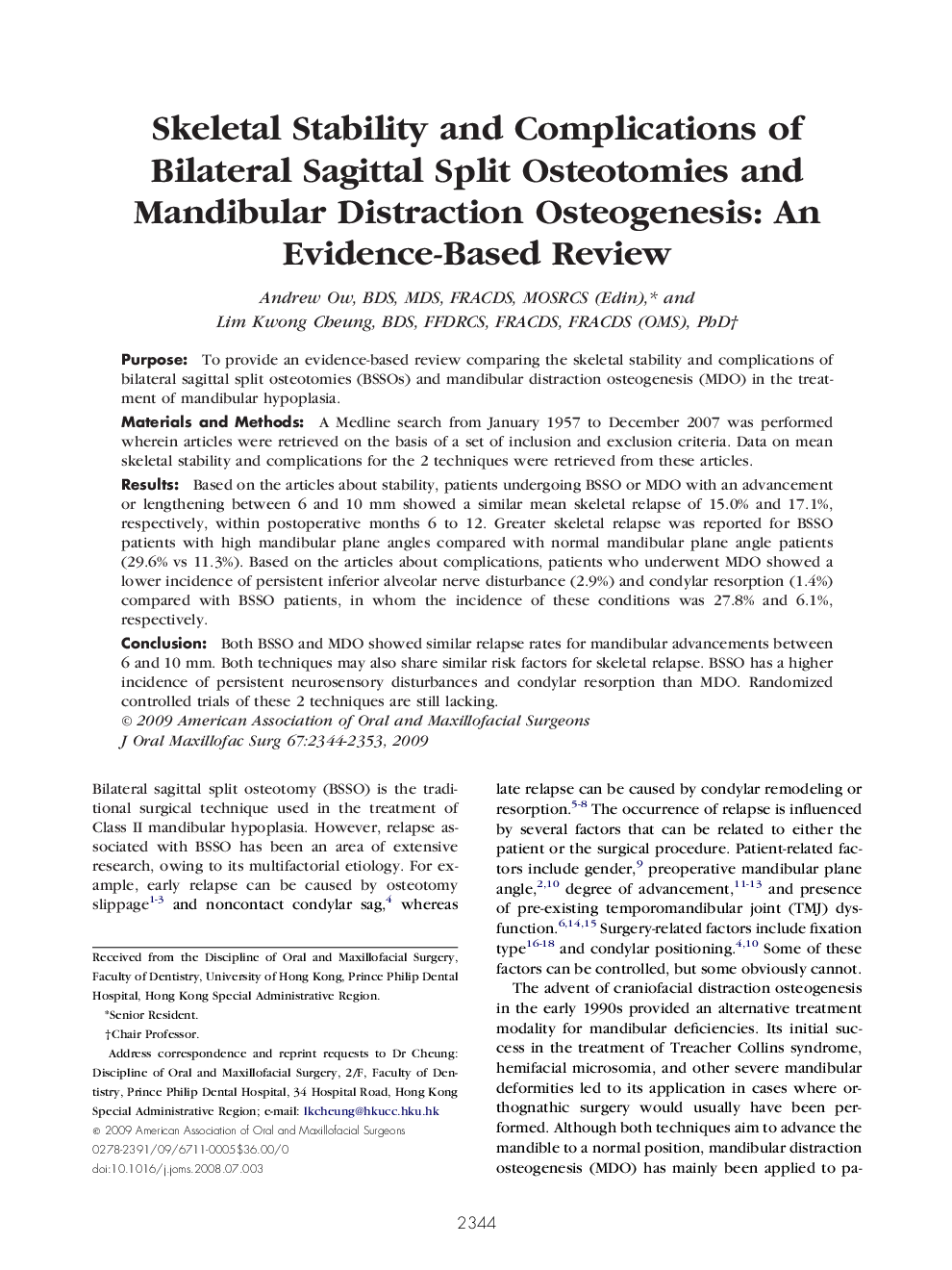| کد مقاله | کد نشریه | سال انتشار | مقاله انگلیسی | نسخه تمام متن |
|---|---|---|---|---|
| 3155096 | 1198069 | 2009 | 10 صفحه PDF | دانلود رایگان |

PurposeTo provide an evidence-based review comparing the skeletal stability and complications of bilateral sagittal split osteotomies (BSSOs) and mandibular distraction osteogenesis (MDO) in the treatment of mandibular hypoplasia.Materials and MethodsA Medline search from January 1957 to December 2007 was performed wherein articles were retrieved on the basis of a set of inclusion and exclusion criteria. Data on mean skeletal stability and complications for the 2 techniques were retrieved from these articles.ResultsBased on the articles about stability, patients undergoing BSSO or MDO with an advancement or lengthening between 6 and 10 mm showed a similar mean skeletal relapse of 15.0% and 17.1%, respectively, within postoperative months 6 to 12. Greater skeletal relapse was reported for BSSO patients with high mandibular plane angles compared with normal mandibular plane angle patients (29.6% vs 11.3%). Based on the articles about complications, patients who underwent MDO showed a lower incidence of persistent inferior alveolar nerve disturbance (2.9%) and condylar resorption (1.4%) compared with BSSO patients, in whom the incidence of these conditions was 27.8% and 6.1%, respectively.ConclusionBoth BSSO and MDO showed similar relapse rates for mandibular advancements between 6 and 10 mm. Both techniques may also share similar risk factors for skeletal relapse. BSSO has a higher incidence of persistent neurosensory disturbances and condylar resorption than MDO. Randomized controlled trials of these 2 techniques are still lacking.
Journal: Journal of Oral and Maxillofacial Surgery - Volume 67, Issue 11, November 2009, Pages 2344–2353